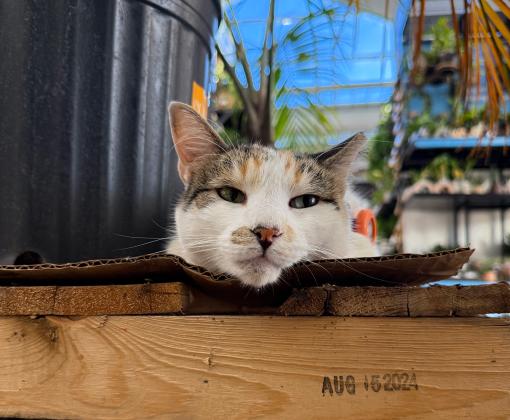
How to Help an Injured Wild Bird
If you've found an injured bird in your yard or while out and about, quick action can mean the difference between life and death. It's important to assess the situation to know how to intervene — and whether that's even necessary.
For example, people often find young birds on the ground during the spring, summer, and early fall as the birds are leaving the nest and learning how to fly. These birds usually don't need rescuing, but a wildlife rehabilitator can help you determine that. However, if a bird is noticeably injured, sick, or otherwise acting off (e.g., an adult bird who doesn't immediately fly away when you approach), a licensed wildlife rehabilitator will likely need to intervene.
How to Find a Licensed Wildlife Rehabilitator Near You
For the bird to have the best chance of recovery and release, contact a rehabilitator right away. Don't try to care for the bird yourself. Only a licensed wildlife rehabilitator has the special equipment and skills to provide the injured bird with proper care.
If you have determined that a bird needs rescuing, follow the instructions below for catching and transporting the bird to a wildlife rehabilitator.
How to catch an injured bird
Here's how to catch an injured bird in some common situations:
- Bird is in the mouth of a dog or cat or caught in a fence: Extricate the bird as carefully and quickly as you can. Try to maintain your hold to prevent the bird from flying away and potentially dying from injuries.
- Bird is on the ground and unable to fly: Approach the bird from behind quietly and slowly. Then, reach down quickly and precisely. Without hesitating put your hand around the bird’s shoulders, holding the wings folded against the body, and pick up the bird. If this does not work in the daytime, try again in the early evening when it is almost dark.
- Bird is able to run, walk, or hop: Try to maneuver the bird into a corner or against a wall to pick them up. If necessary, ask one or two other people to help you. A bird net also can be useful.
- The bird can fly a little: You might be able to catch the bird after dark or by maneuvering them into a corner. Again, a bird net can help. If the bird can fly well, you might be able to catch them the next day when they might be weaker from their injuries.
- The bird is flying well but has an injury you can see: It might not be possible to catch the bird. Do not get into a situation in which you are chasing the bird with no possibility of catching them. That will accomplish nothing, and the bird might die of stress.
In some cases, especially with a bird who lives in your yard, you might be able to set out seed on the ground leading into a pet carrier and then carefully shut the door once the bird goes in. Avoid trapping other birds with the injured bird, as this might cause further injuries. This method works best with injured pigeons, doves, and some other ground feeders.
Handling a wild bird
Once you have the bird in hand, do not let go; keep a firm (but not tight) hold on the bird. Don’t ever pick up a bird by the wings, head, or legs — only by the body.

See how your community is doing
Support the body of the bird and the bird’s feet with one hand. (The feet should not be dangling; they should be just underneath the body of the bird in the palm of your hand.) If the bird fits easily in the palm of your hand, then place your other hand over the top of the bird and hold the bird securely in both your hands. Don’t leave spaces between your hands that the bird can wiggle through.
If the bird is bigger than the palm of your hand (e.g., a pigeon), hold the bird in one hand, as described above, and put your other hand around the shoulders of both wings so that the wings are held folded in their normal, at-rest position against the body of the bird.
Here are some things to be aware of as you handle the bird:
- The bird is very frightened. The bird is injured, in an unfamiliar situation, separated from their mate or flock, and being held by a large predator (you). The bird is not aware of your good intentions.
- The bird might be extremely still, but that does not mean they're calm. Birds adopt this still state when they feel their lives are threatened; it is a defense against being noticed by predators.
- Injured adult songbirds can very easily die of stress. Do not hold the bird any longer than you need to. Don’t stare at the bird, try to examine them, or attempt to assess their injuries. You want to handle the bird as little as possible; they'll be frightened, not comforted, by being “petted.”
Take the bird inside into a secure room, one where the door can be closed and where there are no animals or children. It is best that the room has little furniture because if the bird gets away from you, they might slip into a container or behind a piece of furniture where it's difficult to reach them. A bathroom is often a good room to take the bird into; you can put a towel under the bathroom door to block off that space if necessary.
If the bird seems able to fly, it’s best to cover the windows until you have the bird inside a box. Otherwise, the bird might get away from you become injured from flying into the window.
Wildlife Rescue: Safety Precautions
Making a box to transport a bird
You'll need to prepare a box in which to transport the bird to a wildlife rehabilitator. Here's how:
- Find a sturdy cardboard box that has a top. For most songbirds, a shoebox is a good size.
- Put a cloth (not terry cloth) inside on the bottom. A tea towel, a T-shirt, or even a couple of paper towels will do fine. You don’t want to use terry cloth (the fabric most towels are made of) because birds can catch their beak or toes on the loops.
- Make a “nest” that fits the bird. On top of the cloth or paper towels, roll a second small towel (this needs to be a cloth one but not terry cloth) into a doughnut shape. This will serve as a "nest" to help support the bird. But if the bird doesn’t stay there, that’s OK.
- Put several small air holes, each about the diameter of a pencil, in the top of the cardboard box. More small air holes are better than a few big air holes. Be sure to make the air holes before placing the bird in the box.
- Place the bird in the box. When placing the bird inside the box, be very careful that the bird does not fly away. This can happen easily, and it can cause more injuries. Don’t assume that the bird can’t fly; they might regain the ability to fly unexpectedly. Promptly tape the box shut, and make sure there are no cracks that the bird can squeeze through.
- Add a source of heat. If you have a heating pad, set it on low, place a towel over the heating pad, and then set the box with the bird in it on top of the heating pad. A good temperature for an injured songbird is 85 degrees Fahrenheit.
Put the cardboard box in a quiet and dark area indoors that's away from pets and children. Make sure the box is not in direct sun or right in front of heating or cooling vents. Do not give the bird any food or water unless the wildlife rehabilitator specifically instructs you to. It is very easy to drown a bird. If you are waiting for the rehabilitator to come to you, leave the bird alone in the box in the meantime.
How to transport a bird to a wildlife rehabilitator
Your goal is to get the bird to a rehabilitator as soon as possible, ideally within an hour. On the drive, keep the box with the bird in it out of the sun and air-conditioning. If air-conditioning is necessary to maintain a temperature of 85 to 90 degrees Fahrenheit, protect the bird from the breeze. The box needs to be out of any breeze, including a breeze from slightly opened windows. The bird will need quiet, but soothing music at a low volume is fine.
Carry and place the box gently in the car. Young children should not hold or sit next to the box; they are not able to hold the box level and steady enough to avoid potentially further injuring the bird. If possible, it is better not to bring children with you.
The rehabilitator might have a wildlife center or might be doing rehabilitation out of their home. Don’t be alarmed by the latter. Many rehabilitators operate out of their homes, and they are just as qualified as those in wildlife centers.
Be prepared to provide some information, such as your name, your address, the time and the exact location where you found the bird, and a description of the incident if you saw what happened to the bird. If you wish to, ask the rehabilitator whether you can call later to find out how the bird is doing.
Once you’ve turned the bird over to the rehabilitator, congratulate yourself on doing the best you could to help a bird to live and be released back to the wild.
Legal considerations for helping wild birds
This information is meant for use only with injured or ill songbirds. There is no reason — and it is also illegal — to catch a bird who is not injured or ill. It is legal to take a native wild bird directly to a licensed wildlife rehabilitator but not legal to possess such a bird otherwise.
